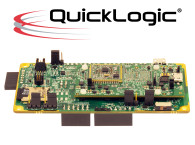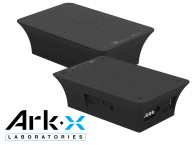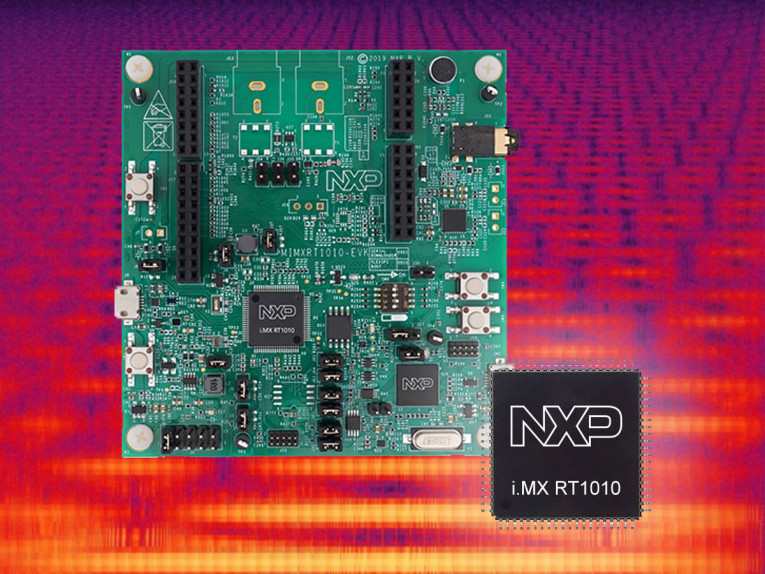
Additionally, to achieve an optimal balance of power, performance, and cost-effective integration, the solution uses advanced 28nm FD-SOI technology for lower active and static power requirements, making NXP the first company to build MCUs in this advanced technology node.
“NXP saw the potential early on to create high-performance crossover MCUs, utilizing the latest applications processor architecture and design philosophies,” says Geoff Lees, senior vice president and general manager of Microcontrollers at NXP. “Now, with the i.MX RT1170 breaking the GHz barrier, we have opened up edge computing to all these technology possibilities.”
The i.MX RT1170 MCU features include: a dual-core architecture with the Arm Cortex-M7 core running up to 1GHz and Cortex-M4 running up to 400MHz, 2D vector graphics core, NXP’s pixel processing pipeline (PxP) 2D graphics accelerator, and EdgeLock 400A, the Company’s advanced embedded security technology.
Moreover, it is architected to deliver a record-setting 12ns interrupt response time, 6468 CoreMark score and 2974 DMIPS while executing from on-chip memory. The new crossover MCU integrates up to 2MB of on-chip SRAM, including 512KB that can be configured as TCM with Error Code Correction (ECC) for Cortex-M7 use, and 256KB of TCM with ECC for Cortex-M4 use.
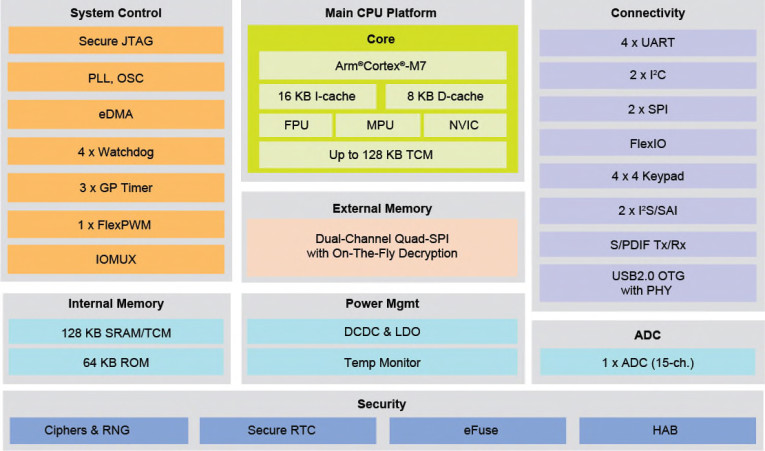
The i.MX RT1170 dual-core system pairs a high-performance core and a power-efficient core with independent power domains of operation, enabling developers to run applications in parallel or reduce power consumption by turning off individual cores as necessary. For example, the energy-efficient Cortex-M4 core can be dedicated to time-critical control applications, such as sensor hub and motor control, while the main core runs more complex applications. Additionally, its dual-core system can run ML applications in parallel, such as face recognition with natural language processing to create human-like user interactivity.
For edge compute applications, the GHz Cortex-M7 core significantly enhances performance for ML, edge inference for voice, vision and gesture recognition, natural language understanding, data analytics, and digital signal processing (DSP) functions. The combination of GHz performance and high density of on-chip memory speeds up face recognition inference time by up to 5x compared to the today’s fastest MCUs in the market, in addition to having processing bandwidth to improve accuracy and immunity against spoofing. The GHz core is also exceptionally efficient in executing computationally demanding voice recognition, including audio pre-processing (echo cancellation, noise suppression, beamforming, and barge-in) for improved cognition.
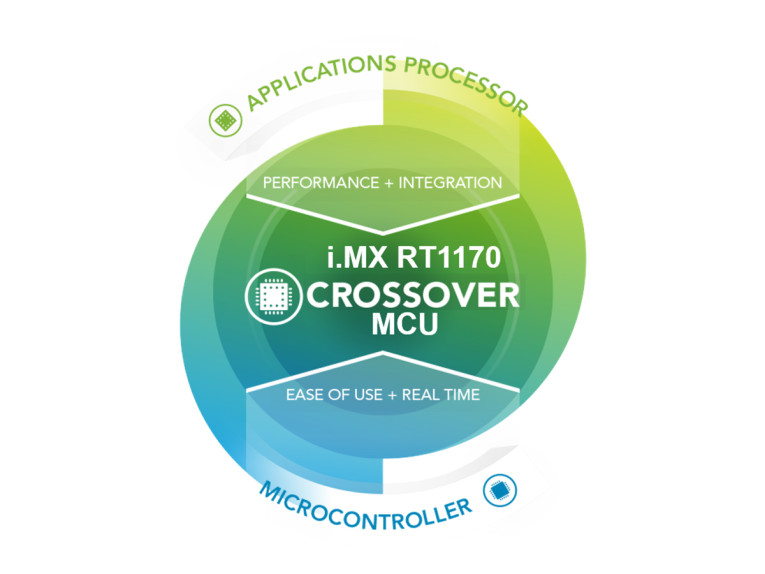
“As we move towards a world of a trillion connected devices, businesses are looking for real-time data insights, driving an increased requirement for on-device intelligence,” said Dipti Vachani, senior vice president and general manager of the Automotive and IoT Line of Business at Arm. “The i.MX RT1170 family efficiently combines enhanced on-device processing with low-latency performance, significantly lowering the bill of materials (BOM) cost, while pushing the boundaries of what’s possible for embedded and IoT applications.”
Building upon its decades-long strength in securing embedded processors, the i.MX RT1170 family incorporates NXP’s EdgeLock 400A embedded security sub-system, that includes High Assurance Boot (HAB) – NXP’s version of secure boot, secure key storage, SRAM-based PUF (physically unclonable function), high performance crypto accelerators for AES-128/256, Elliptical Curve Cryptography, RSA-4096 encryption algorithms, hashing acceleration for SHA-256/512, in addition to tamper detection. The i.MX RT1170 MCU also features in-line encryption engine (IEE) and on-the-fly decryption engines (OTFAD) to address the challenge of protecting the confidentiality of data stored in internal and external memories with no latency impact. The IEE is designed to encrypt and decrypt on-chip SRAM and external SRAM/PSRAM/DRAM, while OTFAD operates on external serial and parallel flash memories.
As the industry’s first MCU to integrate a 2D vector graphics core with support for Open VG 1.1 API, the i.MX RT1170 family enables the development of attractive user interfaces at low power by off-loading intensive graphics rendering to the GPU. The GHz core also brings 720p displays at 60fps refresh and 1080p HD screens at 30fps to create immersive visual experiences. The complementary combination of a GPU and high-performance core can be especially useful for smart home, industrial, and automotive cockpit applications.

www.nxp.com



